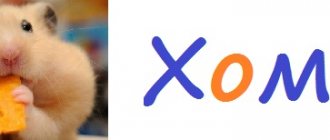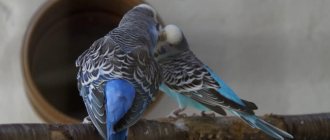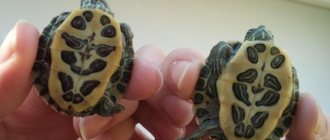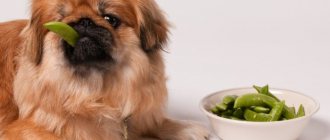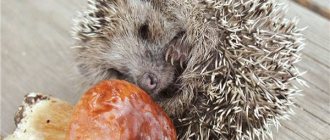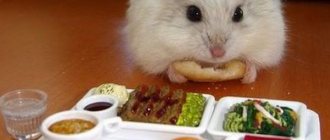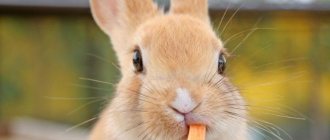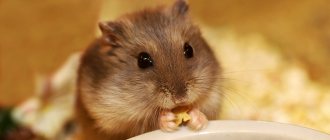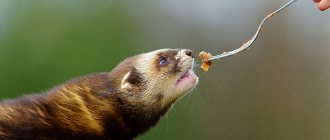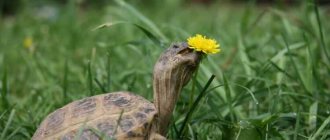Lovebirds make great pets as they are small, active and cheerful birds. Proper feeding will ensure that they feel good. Start by choosing food that is suitable and healthy for these parakeets. You can then create a feeding schedule. It will ensure that your parrots get enough food and nutrients on a regular basis. From our article you will learn what you can feed lovebirds at home. In addition, sometimes in order for the chicks to develop well, they are fed by hand. Although this can be a very time consuming process. We will also tell you further about how to properly feed lovebird chicks.
Finding the right granulated food for lovebirds
What are the benefits of food pellets and why is it an ideal food for poultry? The fact is that this food is designed to give birds all the beneficial elements that their bodies need every day. Choose pelleted food based on the age of your lovebirds. Make sure your feed pellets contain natural ingredients. Also check that they do not contain harmful additives or preservatives.
- Various granular feeds are sold for adult lovebirds and chicks. Birds aged ten months and older are called adults.
- Look for lovebird food at local pet stores or online.
Mineral supplements
During the period of active growth, when changing plumage, during nesting, lovebirds need increased nutrition. Regular food does not contain enough minerals; in addition, not all micro- and macroelements are properly absorbed. To compensate for the lack of nutrients, parrots need mineral supplements:
- sepia (cuttlefish shell);
- chalk;
- bone flour;
- organic sand;
- clay;
- nut and eggshells;
- slaked lime.
Pet stores sell a specially selected Rio mineral mixture for parrots, which includes components for the proper functioning of the digestive system. A hard mineral stone is fixed to the wall of the cage to make it easier for lovebirds to break off pieces.
Choose a high-quality seed mixture that your birds will enjoy eating.
Your task is to find or make your own mixture that has a wide variety of grains. What seeds do lovebirds eat from seeds? Perfect for: millet, canary grass seeds, oatmeal, niger seeds, flax, sunflower, safflower and rapeseed.
Other seed mixtures may contain soybeans, fennel seeds, rye, whole brown rice, sesame and poppy seeds.
- The seeds do not have much nutritional value for lovebirds. Therefore, they are recommended to be given only in very small quantities as treatment. They should never be your bird's only food source.
- Use only fresh seed mixture. If it smells dusty or old, you shouldn't give it to lovebirds.
What not to give to your pet
If you want your lovebird to live as long as possible, make sure he never meets:
- cheese, cream, butter and sour cream,
- sauces and mayonnaise,
- hot peppers and eggplants,
- meat, fish and seafood,
- fruits in sugar,
- exotic fruits (mango, papaya, avocado, persimmon),
- pits of cherries, cherries, apricots, plums, peaches and nectarines, as well as apple seeds,
- oak branches, viburnum, coniferous, poplar, as well as pear, lilac and bird cherry,
- sorrel and rhubarb,
- mushrooms.
Be responsible when it comes to feeding your lovebirds. If your parrots receive complete and varied food, you do not overfeed them and always provide fresh water, they will delight you for a long time with their activity, bright plumage and sociability.
In this video, watch how to feed baby chicks:
Setting a Feeding Schedule
Now in proportions about what to feed lovebirds. One tablespoon (fourteen milliliters) of food daily is enough for one lovebird. Seventy percent of the diet should be pellet food. The remaining thirty% is a combination of various vegetables and fruits.
Try to feed your lovebirds at the same time every day. Then they will get used to feeding time.
Fasting is prohibited
Lovebirds have an increased metabolism: energy is needed for flight, and food is needed for energy. Therefore, these parrots have a body temperature exceeding 40 °C, and the stomach continuously produces gastric juice and digests incoming food in a matter of hours. Lovebirds cannot go hungry; it is important to provide your pet with constant access to food: he will not eat too much, and a lack of food will cause negative consequences.
This does not mean that you can feed lovebirds the same thing, just to ensure a feeling of satiety. A meager diet will lead to a deficiency of minerals, and the parrot will simply get bored.
Fruits and vegetables must be thoroughly washed
Only after this can they be given to parrots. For washing, use clean running water. Then cut the food into small pieces and place them not in the feeder with food, but somewhere else in a plate. You don't need to peel fruits or vegetables, as most lovebirds can digest skin.
- Try to give a variety of fruits and vegetables. Don't feed them the same foods over and over again.
- Give your lovebirds vegetables and fruits as small snacks once or twice a day.
We talked about what they eat and what you can feed your lovebird at home. Now let's touch on the issue of drinking.
Daily norm
In order for the bird’s nutrition to be correct and balanced, it is important to maintain proportions. An adult lovebird needs two to three tablespoons of dry grain per day. If parrots eat wet food well, it can be given without restrictions, but alternate types of fruits every day. For example, today offer your pet a quarter of an apple, tomorrow grate raw carrots, then fresh berries.
On days when the lovebird receives protein food, the amount of succulent food should be reduced. Let the greens be present in the cage every day, but they must be fresh, without signs of spoilage. Wet foods should not be left overnight; before going to bed, they are removed and grain is poured into the feeder. The bird wakes up hungry, it needs to peck something right away.
Pour clean water into the birds' water bowl.
Parrots need a lot of clean, fresh water. It should be changed daily. In addition, it is necessary to add water to the container if it runs out. Make sure the water bowl is full before going to bed. It is important that parrots have the opportunity to drink at night.
Always use shallow waterers to prevent birds from drowning.
Drink
A necessary condition for keeping parrots is that there should always be fresh water in the drinking bowl. Lovebirds can be given bottled or filtered water at room temperature. Plain tap water is quite suitable for parrots, but it must first be soaked until the chlorine evaporates. Boiled water should not be offered to a parrot, since when heated, its structure changes and some of the beneficial properties disappear.
For illnesses, lovebirds are advised to drink herbal tea - a drink that relieves inflammation and calms the nervous system. For infusions you can use dry chamomile and rose hips.
Important: Any liquid must be poured into a clean drinking bowl. When cleaning is done poorly, pathogenic microorganisms appear in containers.
Selection of syringes and feeds
Small syringes will do. You can purchase them at local pet stores and pharmacies in your locality. Now about what they feed little lovebirds. Here we need food for the chicks. Such food is often presented in powder form.
To prepare the feeding formula, you will need to mix the powder with boiling water. Follow the instructions on the packages. Then you will be able to correlate the amount of powder and water in the correct proportions.
Features of nutrition during the mating period
Healthy nutrition is especially important for parents during the period of hatching and feeding chicks. The quality of feed and its composition will affect the health of future young animals. During this period, breeders advise eliminating industrial additives and replacing them with natural ones.
During the brooding period
It is especially important for the female to get enough calcium, because it is responsible for the formation of eggshells. Due to the lack of the element, the eggs will be fragile: even a small crack on the surface will lead to disastrous consequences.
Products necessary for the female during the brooding period:
- chicken eggs;
- walnuts;
- cottage cheese;
- sprouted wheat;
- pea or rice porridge.
While feeding the chicks
As soon as the young animals appear, the female gives them gruel from the crop. A little later, the male joins in the feeding, providing the chicks with semi-digested food. During this period, birds need foods rich in proteins, vitamins and minerals. All these elements can be found in crumbly cereals and sprouted grains.
When feeding chicks, veterinarians recommend adding special preparations to the parents’ food that promote rapid absorption of calcium and are rich in group D vitamins. You can buy them at any veterinary pharmacy.
It is also useful to read: Jaco Parrots
Feed lovebirds slowly
Hold the bird in one hand, with your fingers lightly clasping it in the chest area. Fill the syringe with the nutrient mixture to six to eight milliliters. Place a small amount on your palm and check that the mixture is not hot. It should just be warm to the touch. Gently tilt the chick's head up. Place the syringe into the parrot's beak. After this, start feeding.
Let the chick consume the mixture slowly and at its own speed. Don't force him to feed from a syringe.
Appearance
What does a lovebird look like? The bird is easily recognized by its small size, squat build, small tail and sharp, rather long beak. A white ring can sometimes be seen around the eyes, which is especially visible against a bright background.
The color of the beak is dark orange, sometimes turning into red. There is a white stripe at the end. The head is painted orange, while closer to the back of the head the color turns into brown. The belly is yellow, the neck and cheeks are slightly darker. All other parts of the body are bright green, with the wings being slightly darker than the body. The tail sometimes has blue spots, but the main color is also green.
In pet stores you can find colorful birds; each of these species was bred through long selection.
Young birds are as similar in color as adults, but their color is slightly darker and grayer than that of adult birds. Lovebird chicks also have black spots under their lower jaws. With age, the color becomes brighter and the dark spot disappears. This is what a lovebird looks like.
Interesting fact. Thanks to the productive work of breeders, it is now possible to purchase a bird of almost any color that a person likes.
Check your lovebird's crop for swelling
The crop is the upper part of a parrot's abdomen that swells when it eats. As soon as it begins to bulge, stop feeding the bird.
Feed your parrot the mixture every three or four hours. Always continue feeding until the crop becomes prominent and no more.
Spreading
Lovebirds come from Africa - the southwestern and southeastern parts of it. For some species, the homeland is also the island of Madagascar. The birds live near large bodies of water and usually nest in empty steppes or, conversely, in dense forests in a subtropical climate. Thanks to the large amount of vegetation, birds can easily find food in any conditions.
Varieties
The most popular species of these birds is not the black-cheeked lovebird, as it might seem, but the pink-cheeked one. Their peculiarity is that they easily adapt to living conditions in captivity and produce offspring without any problems. Diseases of lovebirds are less common in this breed. The main color of the feathers is green, they are found on the back, belly, tail and wings. The head, on the contrary, has a bright red color, gradually changing it as it moves to the body.
Thanks to long breeding work, many birds of other colors were born.
You can also often find Fischer's parrots. They love to talk and easily cope with the “move” to captivity. The body is green, the head is orange, and the chest is yellow. Through selective breeding, you can get a number of very interesting colors from chicks.
An equally popular breed is the masked lovebird. This name was given due to the white “mask” around the eyes.
It contrasts very well with the black head, while the rest of the body is green and the beak is red.
Collared
The body color of these birds is green, the belly and chest are yellow. They have a very beautiful gray-black beak. On the wings you can see stripes of red and black. The name was given due to two stripes - black and yellow, which are found on the neck. The body length is less than 14 cm, the weight rarely exceeds 40 g. They live on average about 10-15 years.
Necklace lovebirds are not often found in captivity, as they are very difficult to catch in their natural habitat. Birds prefer to nest in treetops.
In addition, they are real gourmets who vitally need to eat seeds from their homeland and fresh figs, without which life ends much earlier.
Liliana's lovebirds
This species is very similar to Fischer’s species, but there are a number of differences that immediately show that this is the species in front of a person:
- The body color is light green.
- The second name is strawberry-headed, the name is derived from the color of the head.
- The chest and neck are yellow, and the beak is red.
Females and males are identical to each other. This species is the smallest among the entire breed - the body length does not exceed 13 centimeters, and the weight is usually less than 30 g.
It is very difficult to find in someone’s home, since the birds are close to extinction and their catching is prohibited.
Red faces
The forehead, cheeks and neck of this species are colored orange-red, which is why they got their name. The rest of the body is green. The average weight is around 40 g, the body length is about 15 cm. It is quite easy to find the difference between a male and a female - the former are usually larger, the latter have a more yellowish color.
A distinctive feature is that they love to sleep like bats - upside down. For life, they prefer to choose anthills rather than the tops of tall trees. They dig holes for themselves in advance, usually 40 centimeters deep is enough. For this reason, it is very difficult to tame them in captivity.
But if the owner succeeds, the pet's life expectancy can be 20 years.
Greyheads
Very timid and afraid of everything, birds that are very difficult to catch in the wild. At the same time, it is very difficult for them to get used to life in captivity and are in danger of extinction, which is why they are rarely chosen as a pet.
The second name is Madagascar, after the name of their homeland, they do not differ in size from their red-faced “brothers” - length up to 15 cm and weight up to 40 g. Males and females are easier to distinguish from each other:
- Most of the male's body (head, chest and neck) is gray, the rest of the feathers are green.
- The female has no gray spots.
The wings are the same in color in both sexes - dark green, the beak is not very large and is colored gray.
Blackwing
If you look at the wings of this species, everything will become clear with the name - the bird has black stripes on its wings. The difference between male and female individuals is visible to the naked eye - the former are larger, the color of the forehead is red. The second ones have a green forehead. Mass of birds
Rarely found as pets due to their dull colors. There is also a restriction on catching these birds and subsequent transportation to other countries. Keepers often find it difficult to find a suitable partner, which is why they rarely breed in the wild.
At the same time, this species has a number of advantages relative to others - they are quite smart birds, quite active. Despite all this, they have a calm character. They tolerate life next to birds of other species and other animals in general without any problems.
Black-cheeked
It is very difficult to see in the wild or in captivity, as there are very few representatives of this species left; it is close to extinction. They are even smaller in size than necklace birds. The feathers on the neck are red-red, the crown is dark orange. There is a white “mask” around the eyes, the rest of the body is painted green. Chicks differ from adult birds in the color of their beak - the former have orange, and the latter have red. There are no differences between males and females. Breeders were able to develop several different colors of these birds.
The singing of this lovebird species is the most pleasant of all. They are also not the largest in size: the body length is about 15 cm in length, the weight does not even reach 50 g. Calm birds that do not quarrel with other pets obey and become attached to the owner.
At the same time, they are quite active, they love to fly around the house and explore new territory.

